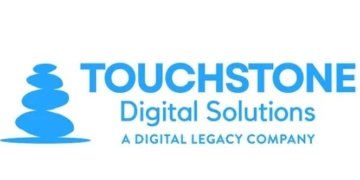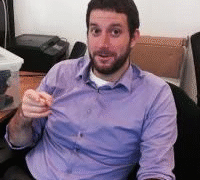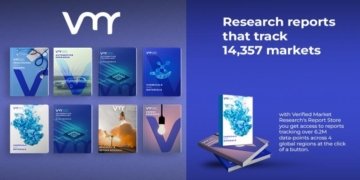Overview of the Radar Sensor Market
The global radar sensor market is experiencing rapid expansion, driven by advancements in semiconductor technology, growing demand across automotive, defense, and healthcare applications, and the rising adoption of smart devices. Valued at US$ 12.8 billion in 2025, the market is projected to reach US$ 37.9 billion by 2032, growing at a remarkable CAGR of 16.8%. Radar sensors are becoming more compact and energy-efficient, enabling their integration into a wide range of consumer and industrial systems.
Among all segments, the automotive sector leads the market due to the increasing adoption of advanced driver-assistance systems (ADAS) and autonomous vehicles. Geographically, North America dominates the global market with significant investments in defense technology and automotive innovations. The region’s focus on enhancing safety standards, coupled with strong R&D initiatives, continues to accelerate demand for radar sensors.
Elevate your business strategy with comprehensive market data. Request a sample report now: https://www.persistencemarketresearch.com/samples/33474
Key Highlights from the Report
• The radar sensor market is expected to reach US$ 37.9 billion by 2032.
• The market is projected to grow at a 16.8% CAGR from 2025 to 2032.
• Automotive radar sensors dominate the product segment due to ADAS and self-driving vehicles.
• North America leads the market, followed by Asia-Pacific, driven by defense and automotive applications.
• Innovations in millimeter-wave technology and ultra-wideband radar are enhancing market potential.
• Radar sensors are increasingly being used in healthcare for elderly fall detection and disease prediction.
Market Segmentation
Radar sensors are segmented based on product type, frequency band, application, and end-user industry. Product-wise, the market is divided into imaging radar and non-imaging radar. Imaging radar, particularly 77 GHz radar, is seeing growing adoption in automotive systems for collision detection and lane monitoring, while non-imaging radar is widely used in defense, industrial, and healthcare applications.
From an end-user perspective, the automotive sector is the leading consumer of radar sensors, fueled by regulatory mandates for road safety and the push toward autonomous driving. The defense sector follows, relying heavily on radar technology for surveillance, navigation, and missile guidance. Healthcare is emerging as a promising new segment, with radar-enabled solutions being integrated into elderly care, fall detection, and cognitive disease prediction.
Regional Insights
In North America, the radar sensor market is flourishing due to high defense budgets, strong automotive production, and early adoption of smart technologies. The United States alone is projected to reach US$ 14.6 billion by 2032, accounting for a significant share of global revenues.
Meanwhile, Asia-Pacific is witnessing strong growth, led by China, Japan, and South Korea. China is expected to reach US$ 3.7 billion by 2032, driven by its expanding automotive industry, smart city initiatives, and technological advancements in semiconductor production.
Market Drivers
The radar sensor market is powered by the rising demand for safety and automation. In the automotive sector, regulatory pressure to enhance vehicle safety has accelerated the integration of radar-based collision avoidance, blind spot detection, and adaptive cruise control systems. Similarly, defense modernization programs across multiple countries are creating high demand for sophisticated radar systems. Healthcare innovation, particularly in elderly monitoring and fall detection, is another strong growth catalyst.
Market Restraints
Despite strong growth prospects, the market faces challenges. High production and integration costs of radar sensors pose barriers to adoption, especially in cost-sensitive industries. Additionally, technological limitations in detecting non-metallic objects or performing in adverse weather conditions can restrict performance reliability. Furthermore, regulatory restrictions on frequency spectrum usage for radar applications can also hinder market expansion in certain regions.
Read More: https://www.persistencemarketresearch.com/market-research/radar-sensor-market.asp
Market Opportunities
The market is ripe with opportunities, particularly with the integration of radar sensors into consumer electronics and healthcare systems. Demand for contactless monitoring solutions, accelerated by the COVID-19 pandemic, has opened new doors for radar-based sensing in smart homes, elderly care, and wearable devices. Moreover, the transition to autonomous vehicles and smart city infrastructure will continue to generate lucrative opportunities for radar sensor manufacturers. Emerging technologies like AI-driven radar processing and IoT-enabled radar solutions are also expected to transform the market landscape.
Do You Have Any Query Or Specific Requirement? Request Customization of Report: https://www.persistencemarketresearch.com/request-customization/33474
Reasons to Buy the Report
✔ Comprehensive analysis of global market size, share, and growth trends.
✔ Insights into key drivers, restraints, and emerging opportunities shaping the market.
✔ Detailed segmentation analysis by product, frequency, end-user, and region.
✔ Profiles of leading players with recent developments and innovations.
✔ Forecasts up to 2032 to support strategic business planning and investment.
Frequently Asked Questions (FAQs)
How Big is the Radar Sensor Market?
Who are the Key Players in the Global Radar Sensor Market?
What is the Projected Growth Rate of the Market from 2025 to 2032?
What is the Market Forecast for Radar Sensors in 2032?
Which Region is Estimated to Dominate the Radar Sensor Industry through the Forecast Period?
Company Insights
The radar sensor market is highly competitive, with both global giants and emerging technology firms actively participating. Leading companies are focusing on strategic partnerships, R&D investments, and new product launches to strengthen their market presence.
Key Players Operating in the Radar Sensor Market:
1. Texas Instruments Incorporated
2. Robert Bosch GmbH
3. NXP Semiconductors
4. Continental AG
5. Infineon Technologies AG
6. Denso Corporation
7. Lockheed Martin Corporation
8. ZF Friedrichshafen AG
9. Hella GmbH & Co. KGaA
10. Autoliv Inc.
Recent Developments:
• In 2023, Infineon Technologies AG launched its next-generation 60 GHz radar sensor designed for smart home devices and healthcare monitoring applications.
• Continental AG expanded its radar sensor portfolio in 2024 with a high-resolution long-range radar aimed at supporting autonomous driving functions.
Conclusion
The radar sensor market is set for transformative growth, driven by advancements in automotive safety, defense technology, healthcare monitoring, and consumer electronics. With revenues expected to nearly triple by 2032, stakeholders across industries are investing in radar-based solutions to enhance safety, automation, and efficiency. Although challenges such as high costs and technological limitations remain, innovations in millimeter-wave radar, AI integration, and IoT connectivity are paving the way for a new era of smart sensing solutions.
Related Reports:
GSM Module Market https://www.persistencemarketresearch.com/market-research/gsm-module-market.asp
Artificial Intelligence (AI) Chipsets Market https://www.persistencemarketresearch.com/market-research/artificial-intelligence-ai-chipsets-market.asp
Digital Games Market https://www.persistencemarketresearch.com/market-research/digital-games-market.asp
AI Governance Market https://www.persistencemarketresearch.com/market-research/ai-governance-market.asp
Contact Us:
Persistence Market Research
G04 Golden Mile House, Clayponds Lane
Brentford, London, TW8 0GU UK
USA Phone: +1 646-878-6329
UK Phone: +44 203-837-5656
Email: sales@persistencemarketresearch.com
Web: https://www.persistencemarketresearch.com
About Persistence Market Research:
At Persistence Market Research, we specialize in creating research studies that serve as strategic tools for driving business growth. Established as a proprietary firm in 2012, we have evolved into a registered company in England and Wales in 2023 under the name Persistence Research & Consultancy Services Ltd. With a solid foundation, we have completed over 3600 custom and syndicate market research projects, and delivered more than 2700 projects for other leading market research companies’ clients.
Our approach combines traditional market research methods with modern tools to offer comprehensive research solutions. With a decade of experience, we pride ourselves on deriving actionable insights from data to help businesses stay ahead of the competition. Our client base spans multinational corporations, leading consulting firms, investment funds, and government departments. A significant portion of our sales comes from repeat clients, a testament to the value and trust we’ve built over the years.
This release was published on openPR.
















